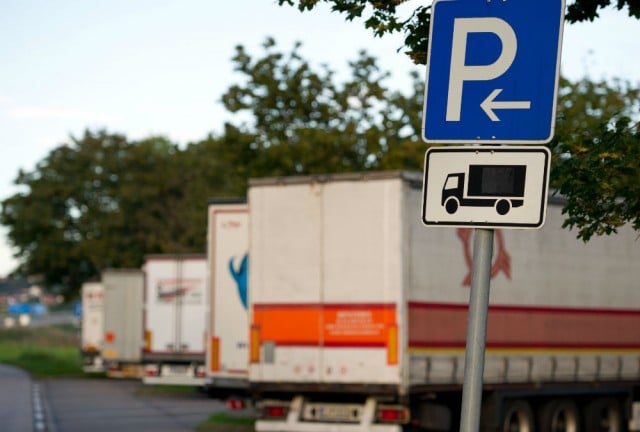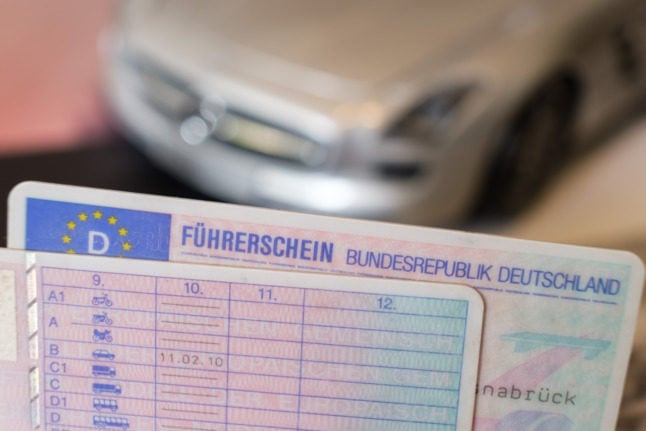The mileage of lorries with a gross vehicle weight of 7.5 tonnes or more on roads in Germany rose to around 25.2 billion kilometres between January and September 2017, according to surveys conducted by the Federal Office for Goods Transport (BAG).
This figure is 3.5 percent higher than the figure determined for the previous year, thus demonstrating strong growth in automobile freight transport across the country.
Earlier predictions saw an average annual growth rate of only 2 percent. But those predictions have now been surpassed due to Germany’s positive economic development and favourable diesel prices.
Not only are there more and more lorries on roads across the Bundesrepublik, current data show that many of them are coming from outside Germany.
READ ALSO: Austria files lawsuit against Germany over autobahn 'foreigner tolls'
Lorries from countries that have become EU members since 2004 accounted for 33 percent of heavy goods traffic between January and August this year. Ten years ago, this figure was almost half the amount at 18 percent in the same period.
The largest share of this figure consists of trucks from Poland – just under 16 percent. Trucks from the Czech Republic and Romania follow suit with about 4 percent and 3.5 percent, respectively.
But this development isn’t necessarily a good thing for German freight forwarding agencies, as this is the tenth year in a row that their share of traffic has steadily declined.
In the period from January to August 2017, trucks with domestic license plates accounted for under 58 percent of heavy goods traffic. Ten years earlier, it was almost 66 percent. The situation is similar in other founding EU member states, according to Die Welt.
Meanwhile, associations in Germany are concerned about cheap competition. According to truck lobbyists and independent market experts, a significant growth in truck transport in the country highlights among other things a difference in wages and social conditions for lorry drivers across the EU.
Many trucks from abroad for instance are permanently stationed in Germany and drivers are only home every few weeks or months. These drivers mainly come from central and eastern European countries and they are paid on the terms and conditions of their home countries.
In August, French President Emmanuel Macron pushed to overhaul the scope of the controversial so-called Posted Workers Directive rule which allows EU firms to send temporary workers from low-wage countries to richer nations without paying their local social charges (e.g. health and welfare systems). Backed by Germany, France wants the job duration of posted employees to be limited to 12 months.
In Germany, there is a lack of truck drivers to fill demand. According to the Federal Association of Road Haulage, Logistics and Disposal (BGL), the effects of the shortage of skilled workers in logistics are taking on previously unknown dimensions.
While over 16,211 apprentices and trainees acquired a truck driver’s license in Germany last year, some 30,000 truck drivers retire each year.
SEE ALSO: Six reasons why I never want to drive on the Autobahn again
The development is also something that affects everyday car drivers on German streets. Non-truck drivers might be able to relate with the feeling of arriving at a rest stop on the motorway only to have to leave again because it’s so crowded.
In Germany, rest and leisure time for truck drivers are legally prescribed, meaning that car parks on motorways are often full – partly due to an abundance of parked lorries.
 A car park on the autobahn. Photo: DPA.
A car park on the autobahn. Photo: DPA.



 Please whitelist us to continue reading.
Please whitelist us to continue reading.